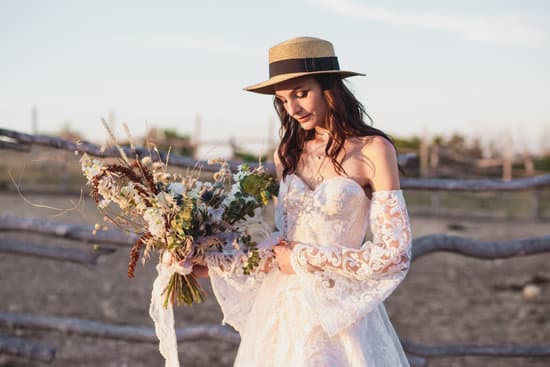When it comes to getting married, one of the most important decisions a couple will make is choosing the perfect rings. But what exactly is the difference between a wedding ring and an engagement ring? Do you get a wedding ring and engagement ring? These are common questions that many couples have as they navigate the process of selecting their special rings.
The history and significance behind engagement rings go back centuries, with various cultures having unique traditions and customs associated with the exchange of these rings. When it comes to choosing the ideal engagement ring, there are several factors to take into consideration, from budget and personal style to understanding the symbolism behind different gemstones and designs.
Once engaged, many individuals wonder whether they should wear both their engagement ring and wedding ring, or if they should switch over to just wearing the wedding band after exchanging vows. There are also etiquette considerations when it comes to wearing both rings, along with options for coordinating or matching these pieces of jewelry. So, allow this article to guide you through all things related to wedding and engagement rings.
The History and Meaning Behind Engagement Rings
Engagement rings have a long history and hold significant meaning in many cultures. The tradition of giving engagement rings dates back to ancient Rome, where the ring was often used as a symbol of ownership over the woman. Over time, the meaning of the engagement ring has evolved to represent love, commitment, and the promise of marriage.
In Western cultures, the tradition of presenting an engagement ring to a prospective bride became widespread in the 19th century. The use of a diamond in engagement rings became popular after a successful marketing campaign by De Beers in the mid-20th century. Today, engagement rings are widely recognized as a symbol of love and commitment between partners.
The act of giving an engagement ring is deeply symbolic and carries with it promises for the future. It signifies a formal agreement to marry and represents the beginning of a lifelong journey together. Many couples choose to make this moment special by selecting a ring that reflects their unique style and relationship. With so much history and symbolism behind them, it’s no wonder why engagement rings hold such sentimental value for those who wear them.
Choosing the Perfect Engagement Ring
When it comes to choosing the perfect engagement ring, there are several factors to consider in order to ensure that the ring reflects both your personal style and the commitment you are making. From the type of metal to the style of the setting, here are some key factors to keep in mind when selecting an engagement ring.
Personal Style
One of the most important factors to consider when choosing an engagement ring is your personal style. Do you prefer a classic and traditional look, or are you more drawn to modern and unique designs? Take some time to think about your everyday fashion choices and find a ring that complements your personal style.
Budget
Another crucial factor in choosing an engagement ring is your budget. Engagement rings come in a wide range of prices, so it’s essential to determine how much you are willing to spend before beginning your search. While it’s important to find a ring that symbolizes your commitment, it’s also wise to stay within a reasonable budget that won’t put unnecessary financial strain on you.
Lifestyle
Consider your lifestyle when choosing an engagement ring. If you lead an active lifestyle or work with your hands, you may want to opt for a more durable and low-profile setting that won’t snag on clothing or get in the way. On the other hand, if you have a more glamorous lifestyle, you may feel comfortable wearing a larger and more ornate ring.
By considering these factors, along with any specific preferences or requirements from your partner, you can make an informed decision when selecting the perfect engagement ring that represents your love and commitment.
Should You Wear Both Engagement Ring and Wedding Ring?
When it comes to wearing both an engagement ring and a wedding ring, the choice is entirely up to the individual. Some may choose to wear both rings at all times, while others may opt to only wear one at a time. There are no strict rules when it comes to this decision, so it ultimately depends on personal preference.
Traditionally, the engagement ring is worn on the fourth finger of the left hand, followed by the wedding ring placed on the same finger during the wedding ceremony. Some individuals choose to move their engagement ring to their right hand after they are married, while others prefer to wear both rings together on their left hand.
The decision of whether or not to wear both rings also depends on practicality and comfort. Some individuals find wearing two rings uncomfortable or impractical for their daily activities, so they may choose to only wear one ring most of the time. Ultimately, there is no right or wrong answer – it’s all about what feels right for the individual.
It’s important for couples to have an open conversation about their preferences for wearing both rings before and after marriage. This way, they can come to a mutual agreement that suits both partners’ tastes and lifestyles. Just like marriage itself, wearing wedding and engagement rings should be based on love and understanding between partners.
| Wearing Both Rings | Considerations |
|---|---|
| Personal Choice | Ultimately depends on personal preference |
| Practicality | Suit individual’s lifestyle and daily activities |
| Open Communication | Couples should have an open conversation about their preferences before and after marriage |
The Etiquette of Wearing Both Rings
When it comes to wearing both an engagement ring and a wedding ring, there are some etiquette rules to consider. These guidelines may help you navigate the decision of how and when to wear both rings.
Wearing During the Engagement
Traditionally, the engagement ring is worn on the fourth finger of the left hand. Once you are engaged, it is customary to wear your engagement ring on this finger until your wedding day. The wedding ring is not typically worn until after the ceremony.
Transitioning From Engagement to Marriage
On your wedding day, it is common for the bride to move her engagement ring to her right hand before exchanging vows. After the ceremony, she can then place her wedding ring on her left hand third finger alongside the moved engagement ring.
Wearing Both Rings Together
After the wedding day, it is considered appropriate to wear both rings together on the left hand. The wedding band is placed closer to the knuckle with the engagement ring in front of it. This tradition symbolizes that the wedding band is closest to your heart.
As you consider when and how you will wear both rings, keep in mind that personal preference always takes precedence over tradition. The most important thing is that wearing these rings feels meaningful and significant for you as a couple.
Can You Have Both Rings at Your Wedding Ceremony?
When it comes to wedding ceremonies, many people wonder if they can have both their engagement ring and wedding ring on during the ceremony. The answer is yes, absolutely. There is no rule that says you can only wear one or the other. In fact, wearing both rings at your wedding ceremony is a common practice and a beautiful way to symbolize the transition from being engaged to being married.
There are a few different ways to incorporate both rings into your wedding ceremony. Some people choose to wear their engagement ring on their right hand during the ceremony and then move it back to their left hand afterwards. Others simply wear both rings on their left hand at the same time. Ultimately, it comes down to personal preference and what feels most comfortable for you.
If you decide to wear both rings during your wedding ceremony, be sure to take some time before the big day to practice putting them on and taking them off together. This will help ensure that you are able to smoothly transition from wearing just your engagement ring to wearing both rings without any fumbling or awkwardness.
Overall, having both rings at your wedding ceremony is a wonderful way to honor the significance of each ring and the journey they represent as a couple.
- You can wear your engagement ring on your right hand during the ceremony
- You can wear both rings on your left hand at the same time
- Practice putting them on and taking them off together before the big day
Options for Matching or Coordinating Wedding and Engagement Rings
When it comes to choosing wedding and engagement rings, many couples wonder if the two rings should match or coordinate in some way. Ultimately, the decision is a personal one, but there are several options to consider when it comes to matching or coordinating these meaningful pieces of jewelry.
Options for Matching Wedding and Engagement Rings
There are several ways to achieve a matched look with your wedding and engagement rings:
- Matching Metal: One of the most traditional ways to coordinate your rings is by choosing the same metal for both. Whether it’s gold, platinum, or another metal, this can create a cohesive and timeless look.
- Matching Design: Some couples opt for matching or coordinating designs for their wedding and engagement rings. This could mean choosing bands with similar engravings, gemstone settings, or overall style.
- Customization: Another option is to customize both the wedding band and engagement ring so that they complement each other perfectly. This could involve incorporating similar elements or creating a unique design that allows the two rings to fit together seamlessly.
Coordinating Wedding and Engagement Rings
If you prefer a more coordinated rather than perfectly matched look, there are also plenty of options available:
- Mixing Metals: Coordinating rings can involve choosing different metals that complement each other. For example, a platinum engagement ring might coordinate beautifully with a yellow gold wedding band.
- Complementary Gemstones: Coordinating doesn’t necessarily mean identical. You could choose gemstones that complement each other in both rings without being exactly the same.
- Varying Widths: Coordinating rings can also involve varying widths – perhaps a wider band for the groom’s wedding ring that complements the bride’s more delicate engagement ring.
Ultimately, whether you choose matching or coordinating wedding and engagement rings, the most important thing is that they hold special meaning for you as a couple. These symbols of love and commitment should reflect your unique relationship and personal style.
Do you get a wedding ring and engagement ring? The answer is ultimately up to you.
Alternatives to Traditional Wedding and Engagement Rings
For some couples, traditional wedding and engagement rings may not suit their style or preferences. Fortunately, there are several alternatives to consider when it comes to choosing these important symbols of love and commitment. One popular option is to opt for non-traditional materials for the rings themselves.
For example, couples may choose titanium, wood, or even ceramic rings instead of the traditional gold or platinum. These alternative materials can offer a unique and modern look while still symbolizing the couple’s commitment to each other.
Another alternative to traditional wedding and engagement rings is to choose a different type of jewelry altogether. Some couples may prefer to exchange bracelets, necklaces, or even tattoos as symbols of their commitment rather than traditional rings. These alternatives can be especially meaningful for couples who have personal or cultural reasons for not wearing traditional rings.
Additionally, custom-designed rings provide another alternative to the standard options available in many jewelry stores. Couples who are looking for something truly unique may choose to work with a jeweler to create custom-designed wedding and engagement rings that reflect their personal style and tastes. This option allows for endless creativity and individuality in designing a set of rings that are truly one-of-a-kind.
Ultimately, there are numerous alternatives available for those who want something different from the traditional wedding and engagement ring options. Whether it’s choosing alternative materials, opting for different types of jewelry altogether, or going the route of custom design, couples have plenty of options when it comes to finding the perfect symbols of their love and commitment.
Conclusion
In conclusion, the decision to wear both an engagement ring and a wedding ring is a personal one, and there is no right or wrong answer. For many people, wearing both rings symbolizes the journey from engagement to marriage, each carrying its own significance and meaning. The engagement ring represents the promise of commitment and love, while the wedding ring symbolizes the lifelong union and partnership in marriage.
The tradition of wearing both rings has evolved over time, with some cultures embracing the practice while others may have different customs. Ultimately, it comes down to individual preference and cultural traditions. Some may choose to wear just one ring or opt for alternative options such as a combination ring that serves as both an engagement and wedding band.
No matter which option you choose, what truly matters is the love and commitment that the rings represent. Whether you decide to wear both rings together or in separate ceremonies, the most important thing is to celebrate the symbolism behind them as a beautiful token of love and devotion. So, whether you choose a traditional approach or a more contemporary one, remember that your choice should reflect what holds meaning for you and your partner.
Frequently Asked Questions
Do Guys Get a Wedding Ring and an Engagement Ring?
Traditionally, men receive a wedding ring when they get married, not an engagement ring. However, some men do choose to wear an engagement ring these days as a symbol of their commitment.
Do You Buy Two Rings for Engagement and Wedding?
In most cases, two rings are indeed purchased for the engagement and wedding. The woman receives an engagement ring when the proposal happens, and then both partners exchange wedding bands during the ceremony.
Is the Ring You Propose With the Ring You Get Married With?
The ring used for proposing is typically different from the wedding band exchanged during the marriage ceremony. The engagement ring is often worn along with the wedding band after the marriage takes place as a symbol of love and commitment.

I have been involved in marriages for over 20 years helping couples and singles understand more about them.





